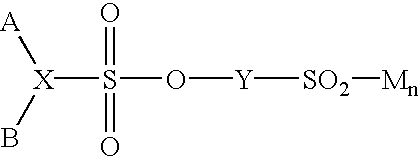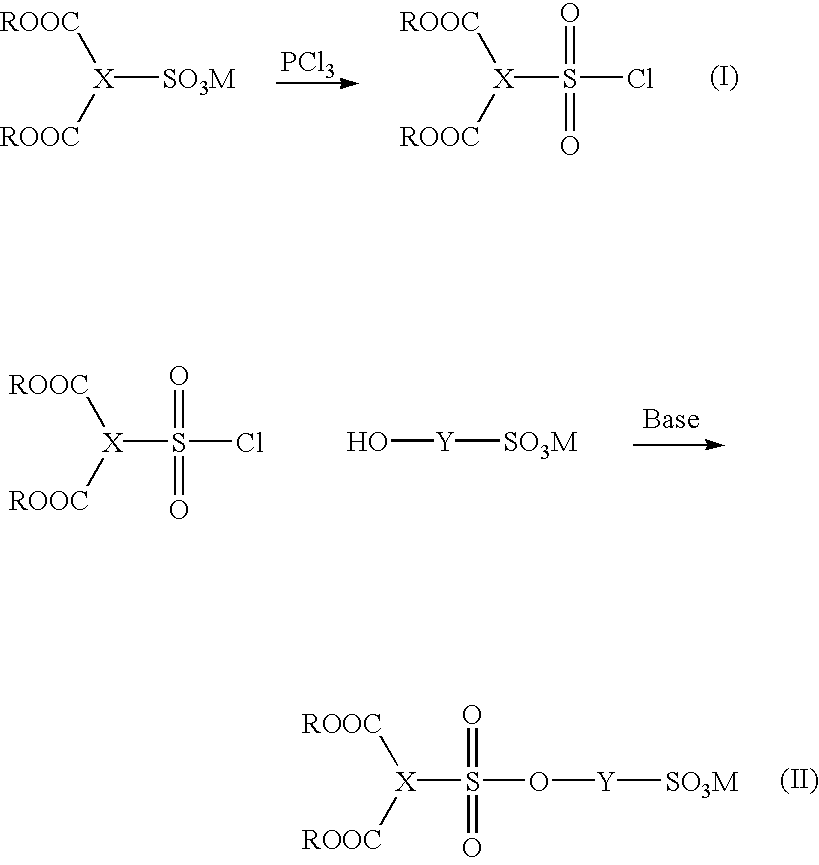Radio frequency (RF) heating system
a heating system and radio frequency technology, applied in the direction of electrical equipment, synthetic resin layered products, packaging, etc., can solve the problems of inconvenient use of flakes as susceptors in thin films, inconvenient use of conventional adhesives, and insufficient adhesion strength of conventional adhesives, etc., to achieve adequate bond or adhesive strength, transparency or translucency, and light coloration
- Summary
- Abstract
- Description
- Claims
- Application Information
AI Technical Summary
Benefits of technology
Problems solved by technology
Method used
Image
Examples
example 2
This example demonstrates the effect of varying the concentration of the polar carrier in blends of the polar carrier and an alternative sulfonated polyester ionomer to the AQ55S of Example 1. The polar carrier of this example is glycerin. The ionomer of this example is a commercially available sulfonated polyester ionomer (Eastman AQ35S)
Several compositions were prepared as hot-melt blends AQ35S and glycerin. The wt. % concentration of glycerin in the compositions was varied from 10% to 70%.
The compositions were prepared as follows:
Each composition was prepared to have a total mass of 50 grams. For each composition, the respective amounts of AQ35S pellets and glycerin were initially weighed into a resin flask and mixed to achieve thorough wetting of the resin pellets with the glycerin. The flask was then fit with a condenser column and sealed stir-assembly, and partially immersed into a 335 F. hot oil bath to achieve controlled heating and melting of the mixture. After the pellets ...
example 3
This example demonstrates the effects of dielectric constant and concentration of various polar carriers on the ability to achieve significantly improved RF activation times in compositions comprising blends of ionomers and polar carriers, as compared to compositions comprising the ionomer without sufficient presence of polar carrier.
The polar carriers and respective measured dielectric constants of this example are:
(1) Propylene carbonate; dielectric constant=62.67 at 25.degree. C.
(2) Glycerin; dielectric constant=42.5 at 25.degree. C.
(3) N-methyl-2-pyrrolidone; dielectric constant=32.2 at 20.degree. C.
(4) 1,2-propyleneglycol dielectric constant=32 at 25.degree. C.
(5) Polyethylene glycol 200; dielectric constant=17.70 at 23.5.degree. C.
(6) Benzoflex 9-88 (dipropylene glycol benzoate); dielectric constant=12.28 at 25.degree. C.
The ionomer of this example is a commercially available 30% solids aqueous dispersion of sulfonated polyester ionomer (Eastman AQ35D). Several compositions we...
example 4
This example demonstrates the effect of varying the concentration of a microcrystalline wax in the composition, X % (80% AQ55S / 20% Glycerin) / Y % wax. The microcrystalline wax in this example was PARICIN 220 (N-(2-hydroxyethyl)-12-hydroxystearamide).
The compositions were prepared as follows:
Each composition was prepared to have a total mass of 50 grams. A 300 gram batch of 80% AQ55S / 20% glycerin was prepared. 240 grams of AQ55S pellets and 60 grams of glycerin were initially weighed into a resin flask and mixed to achieve thorough wetting of the resin pellets with the glycerin. The flask was then fit with a condenser column and sealed stir-assembly, and partially immersed into a 335 F. hot oil bath to achieve controlled heating and melting of the mixture. After the pellets became molten and swollen with the glycerin, the mixture was stirred and blended into a uniform composition. After a total of 4 hours of heating, the flask was removed from the hot oil bath. Several glass jars wer...
PUM
| Property | Measurement | Unit |
|---|---|---|
| dielectric constant | aaaaa | aaaaa |
| frequency | aaaaa | aaaaa |
| molecular weight | aaaaa | aaaaa |
Abstract
Description
Claims
Application Information
 Login to View More
Login to View More - R&D
- Intellectual Property
- Life Sciences
- Materials
- Tech Scout
- Unparalleled Data Quality
- Higher Quality Content
- 60% Fewer Hallucinations
Browse by: Latest US Patents, China's latest patents, Technical Efficacy Thesaurus, Application Domain, Technology Topic, Popular Technical Reports.
© 2025 PatSnap. All rights reserved.Legal|Privacy policy|Modern Slavery Act Transparency Statement|Sitemap|About US| Contact US: help@patsnap.com



